2018-10-11 - Nº 180

Editorial
Esta é a Newsletter Nº 180 que se apresenta com o mesmo formato que as anteriores. Se gostar da Newsletter partilhe-a!
Todas as Newsletters encontram-se indexadas no link.
Esta Newsletter tem os seguintes tópicos:
Faz hoje anos que nascia, em 1755, Fausto Elhuyar. Este Químico e mineralogista espanhol ajudou o seu irmão mais velho, Juan José, em experiências para separar o metal de tungsténio do seu minério de volframita. Dois anos antes, o químico sueco Carl Scheele descobriu o ácido tungsténico, embora não isolasse a forma elementar, de um mineral conhecido desde 1758 como tung sten (pedra sueca, pesada, que agora é conhecida como scheelita). Os irmãos Elhuyar, trabalhando no Seminário de Bergara, conseguiram extrair o metal reduzindo o ácido tungsténico com carvão. Pela primeira vez, os cientistas bascos entraram na história da ciência.
Faz também anos hoje que nascia, em 1855, James Gayley. Este Metalurgico Norte-americano inventou um dispositivo para garantir humidade uniforme na corrente de ar que entrava nos altos-fornos. Com experiência prévia em várias obras de ferro, Gayley foi contratado pela Edgar Thomson Steel Works como supervisor dos Altos Fornos (1885). Nesta capacidade era um economista, e fez uma redução recorde no consumo de coque. Ele inventou a placa de refrigeração de bronze para as paredes do alto-forno, o suporte de fundição auxiliar para as fabricas de aço da Bessemer, e foi o primeiro a usar o motor de sopro de condensação composto com o alto-forno. Ele também inventou a explosão do ar seco, para o qual o Franklin Institute lhe concedeu a medalha Elliott Cresson.
Faz igualmente anos hoje que nascia, em 1884, Friedrich Bergius. Este químico alemão inventou um processo para converter pó de carvão e hidrogénio directamente em gasolina e óleos lubrificantes sem isolar produtos intermediários (Stuttgart, 25 jun 1921). Bergius conseguiu, durante a destilação do carvão, forçar o hidrogénio sob alta pressão a combinar-se quimicamente com o carvão, transformando mais carbono do carvão em óleos do que é possível com a destilação convencional. Para resolver problemas de distribuição de calor e regulação de temperatura, Bergius inventou o tratamento de uma mistura de carvão pulverizado em óleo com o gás sob alta pressão. Pelo seu trabalho no desenvolvimento do método químico de hidrogenação em alta pressão necessário para esse processo, ele partilhou o Prémio Nobel de 1931 em Química com Carl Bosch, da Alemanha.
Por fim, faz anos hoje que nascia, em 1943, Michael Stonebraker. Este cientista da computação especializado em pesquisa em base de dados criou a pesquisa e os produtos da Stonebraker. Ele também é o fundador de muitas empresas de base de dados, incluindo a Ingres Corporation, a Illustra, a Paradigm4, a StreamBase Systems, a Tamr, a Vertica e a VoltDB, e foi director técnico da Informix. Ele também é editor do livro Readings in Database Systems. A carreira de Stonebraker pode ser dividida em duas fases: na Universidade da Califórnia, Berkeley, quando se concentrou em sistemas de gestão de bases de dados relacionais, como Ingres e Postgres, e no Massachusetts Institute of Technology (MIT), onde desenvolveu técnicas mais novas de gestão de dados. como C-Store, H-Store e SciDB. Os principais prémios incluem o Prémio Turing em 2015.
Nesta semana que passou ficámos a saber que a sonda Voyager 2 da NASA, com mais de 40 anos, está a beira de abandonar o sistema Solar. Originalmente construídas para durarem apenas cinco anos e para recolherem só informação sobre Júpiter e Saturno, de forma espantosa, esta sonda acompanhada pela Voyager 1 acabaram por durar (muito) mais do que o esperado. A missão de quatro décadas da NASA é igualmente conhecida por ter enviado com cada uma das Voyager um disco de cobre coberto de ouro de 30 centímetros de diâmetro onde está registada informação sobre a vida na Terra. Entre os dados integrados estão fotografias, sons ambiente, músicas e saudações em 55 línguas diferentes - entre as quais uma em português.
Também esta semana ficámos a saber que a missão que parecia ser rotineira de transportar os cosmonautas da NASA Nick Hague e o Russo Alexey Ovchinin a bordo do foguetão Soyuz, teve problemas. Uma falha nos propulsores do foguetão obrigou a uma aterragem de emergência. Apenas minutos após lançamento surgiram os problemas técnicos devido à falha nos propulsores. Apesar do susto, ambos os cosmonautas encontram-se bem. De acordo com o correspondente da BBC Jonathan Amos, os cosmonautas ter-se-ão apercebido que algo estava errado "porque eles relataram sentir-se sem peso quando deveriam sentir-se empurrados para trás nos seus lugares" pela aceleração.
Na Newsletter desta semana apresentamos diversos projetos de maker assim como alguns modelos 3D que poderão ser úteis. É apresentada a newelectronics de 8 de Outubro de 2018.
 João Alves ([email protected])
João Alves ([email protected])
O conteúdo da Newsletter encontra-se sob a licença  Creative Commons Attribution-NonCommercial-ShareAlike 4.0 International License.
Creative Commons Attribution-NonCommercial-ShareAlike 4.0 International License.
Novidades da Semana
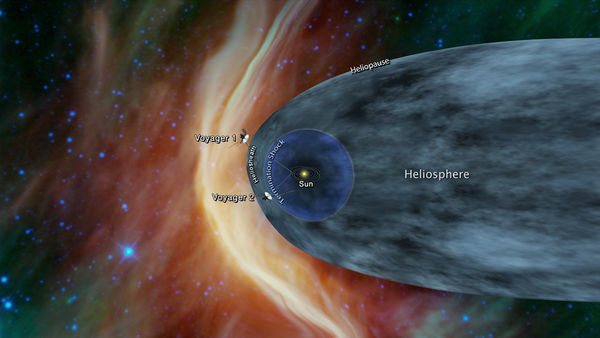
NASA Voyager 2 Could Be Nearing Interstellar Space
"NASA's Voyager 2 probe, currently on a journey toward interstellar space, has detected an increase in cosmic rays that originate outside our solar system. Launched in 1977, Voyager 2 is a little less than 11 billion miles (about 17.7 billion kilometers) from Earth, or more than 118 times the distance from Earth to the Sun. Since 2007 the probe has been traveling through the outermost layer of the heliosphere -- the vast bubble around the Sun and the planets dominated by solar material and magnetic fields. Voyager scientists have been watching for the spacecraft to reach the outer boundary of the heliosphere, known as the heliopause. Once Voyager 2 exits the heliosphere, it will become the second human-made object, after Voyager 1, to enter interstellar space. Since late August, the Cosmic Ray Subsystem instrument on Voyager 2 has measured about a 5 percent increase in the rate of cosmic rays hitting the spacecraft compared to early August." [...]

Two astronauts just survived a 'ballistic descent' in a Russian rocket. Here's everything we know
"On Thursday at 4:40 a.m. Eastern time, NASA's Nick Hague and Russian cosmonaut Alexey Ovchinin launched aboard the Soyuz MS-10 spacecraft from the Baikonur Cosmodrome in Kazakhstan. The two men were set for a sixth-month stint on the International Space Station—Hague's first—but a booster problem during launch forced them to make a rare emergency landing. About two minutes into the ascent, Russian ground control could be heard referring to a "failure of the booster." At the time of posting, audio of the incident is still available via NASA's livestream of the event: The crew, both of whom are reportedly in "good condition," went into "ballistic descent mode," which NASA tweeted involved "a sharper angle of landing compared to normal." The capsule containing the astronauts successfully separated from the rocket booster and parachuted the ground, where rescue teams in helicopters rushed to meet them. According to the BBC's Jonathan Amos, the astronauts would have realized something was wrong "because they reported feeling weightless when they should have felt pushed back in their seats" by a booster separation." [...]
Outras Notícias

New Intel Vision Accelerator Solutions Speed Deep Learning and Artificial Intelligence on Edge Devices
"Today, Intel unveiled its family of Intel® Vision Accelerator Design Products targeted at artificial intelligence (AI) inference and analytics performance on edge devices, where data originates and is acted upon. The new acceleration solutions come in two forms: one that features an array of Intel® Movidius™ vision processors and one built on the high-performance Intel® Arria® 10 FPGA. The accelerator solutions build on the OpenVINO™ software toolkit that provides developers with improved neural network performance on a variety of Intel products and helps them further unlock cost-effective, real-time image analysis and intelligence within their Internet of Things (IoT) devices. “Until recently, businesses have been struggling to implement deep learning technology. For transportation, smart cities, healthcare, retail and manufacturing industries, it takes specialized expertise, a broad range of form factors and scalable solutions to make this happen. Intel’s Vision Accelerator Design Products now offer businesses choice and flexibility to easily and affordably accelerate AI at the edge to drive real-time insights.” –Jonathan Ballon, Intel vice president and general manager, Internet of Things Group Why This Is Important: The need for intelligence on edge devices has never been greater." [...]

Lockheed Martin-Built Advanced Extremely High Frequency Satellite Packed And Prepared To Join The Constellation
"The fourth Lockheed Martin (NYSE: LMT) built Advanced Extremely High Frequency (AEHF) protected communications satellite is one step closer to space. The AEHF-4 satellite was encapsulated into its payload fairing on September 26 in anticipation of its October 17 launch from Cape Canaveral Air Force Station, Florida, on a United Launch Alliance Atlas V rocket. "This fourth satellite will complete a worldwide ring of AEHF satellites to deliver global extended data rate (XDR) coverage for the U.S. Air Force and for the partner nations – Canada, the Netherlands and the United Kingdom – that also connect to the AEHF network," said Mike Cacheiro, Lockheed Martin vice president of protected communications. "The Silicon Valley-based team that built this satellite can't wait to see it lift off. And in the meantime, we're making great progress on producing the fifth and sixth satellites in the constellation." AEHF communications are jam-proof and offer low probability of detection or interception, and the four AEHF satellite constellation will be able to deliver that capability worldwide." [...]

SACS Goes Live, Making Gigantic Leap in Global Connectivity
"The first, fastest connectivity, lowest latency trans-Atlantic link between Africa and the Americas The South Atlantic Cable System (SACS) is now on-stream and open for commercial traffic. The new digital information highway is the first and fastest link between Africa and the Americas with the lowest latency and will provide a more direct routing for internet traffic in the Southern Hemisphere. The SACS from Angola Cables was manufactured and powered by NEC Corporation and is one of the most advanced submarine telecommunications systems to go into commercial operation connecting Angola (Africa) and Brazil (South America). Data transfer speeds will be greatly improved (five times faster than existing cable routings), reducing latency from Fortaleza (Brazil) to Luanda (Angola) from 350ms to 63ms. Luanda, will also connect to London and Miami with approximately 128 milliseconds latency. These two major content hubs will position Angola as a strategic point to serve the transatlantic region with low latency and resilient connections." [...]
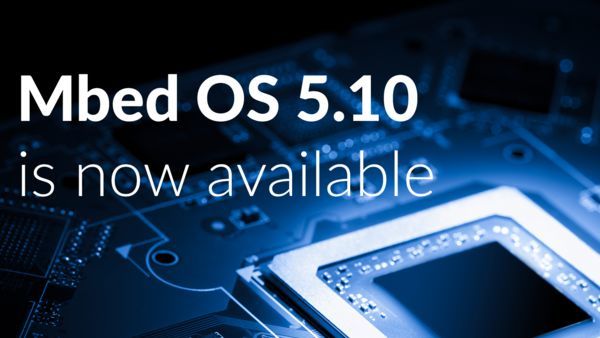
Mbed OS 5.10.1 released
"We are pleased to announce the Mbed OS 5.10.1 release is now available. This is the latest patch release based on the feature set that Mbed OS 5.10 introduces. Summary In this release we have added support for the NUCLEO_L4R5ZI and NUMAKER_IOT_M487. We have made a number of quality improvements : Addressed numerous compiler warnings Tidied up the include paths Updated the documentation in a number of areas A couple of reported known issues from the 5.10.0 release have been addressed: Tools: Mbed CLI dm init fails to load certificate Tools: Mbed CLI dm init command - reports bad country code when certificate expiration changed The following reported issues have also been fixed in this release: New TCPSocket API always returns NULL from accept function Problems with the LowPowerTickerWrapper for all Nuvoton devices SPI is not initializing correctly when an object is destructed and then constructed again. We have implemented changes required to allow TB_SENSE_12 to provide a default network interface for Silicon Labs targets. We have also added a bootloader image for Nucleo F207ZG and enabled RTC for LPC1768." [...]
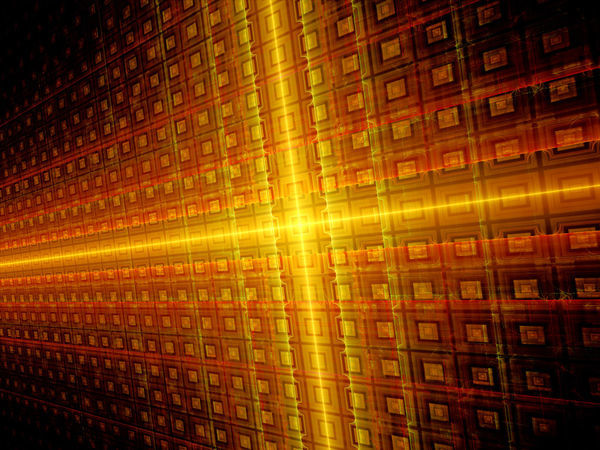
NVIDIA Introduces RAPIDS Open-Source GPU-Acceleration Platform for Large-Scale Data Analytics and Machine Learning
"HPE, IBM, Oracle, Open-Source Community, Startups Integrate RAPIDS, Giving Giant Performance Boost to End-to-End Predictive Data Analytics NVIDIA today announced a GPU-acceleration platform for data science and machine learning, with broad adoption from industry leaders, that enables even the largest companies to analyze massive amounts of data and make accurate business predictions at unprecedented speed. RAPIDS™ open-source software gives data scientists a giant performance boost as they address highly complex business challenges, such as predicting credit card fraud, forecasting retail inventory and understanding customer buying behavior. Reflecting the growing consensus about the GPU’s importance in data analytics, an array of companies is supporting RAPIDS — from pioneers in the open-source community, such as Databricks and Anaconda, to tech leaders like Hewlett Packard Enterprise, IBM and Oracle. Analysts estimate the server market for data science and machine learning at $20 billion annually, which — together with scientific analysis and deep learning — pushes up the value of the high performance computing market to approximately $36 billion. “Data analytics and machine learning are the largest segments of the high performance computing market that have not been accelerated — until now,” said Jensen Huang, founder and CEO of NVIDIA, who revealed RAPIDS in his keynote address at the GPU Technology Conference. “The world’s largest industries run algorithms written by machine learning on a sea of servers to sense complex patterns in their market and environment, and make fast, accurate predictions that directly impact their bottom line." [...]

Renesas Electronics Introduces True Bidirectional Synchronous Buck-Boost Controllers for Industrial Battery-Powered Applications
"High Efficiency ISL81601 and ISL81401 Leverage Proprietary Buck-Boost Algorithm for Reliable Bidirectional Operation and Smooth Mode Transitions Renesas Electronics Corporation (TSE:6723), a premier supplier of advanced semiconductor solutions, today announced an innovative new family of bidirectional four-switch synchronous buck-boost controllers. The ISL81601 and ISL81401 are the industry’s only true bidirectional controllers that sense peak current at both ends and provide cycle-by-cycle current limit in both directions while in buck or boost mode. The controllers generate point-of-load (POL) and voltage rail conversions with peak efficiency up to 99 percent. The ISL81601 has a wide input range of 4.5V to 60V and produces a 0.8V to 60V output to support most industrial batteries: 12V, 24V, 36V and 48V. Also available is the ISL81401, a 4.5V to 40V input and 0.8V to 40V output version, and its unidirectional counterpart, the ISL81401A. The new controllers are well suited for DC power backup and battery-powered medical, industrial and telecommunication systems." [...]
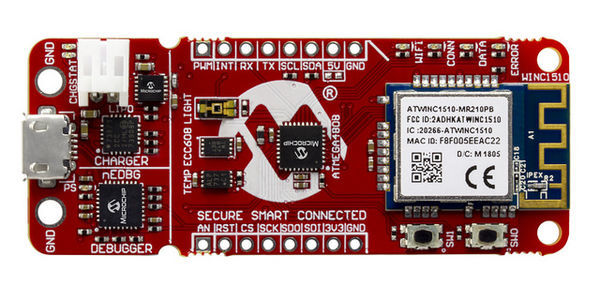
Create Secure Connected Applications in a Single Click with Microchip's AVR MCU Development Board for Google Cloud
"New solution enables developers to easily deploy IoT devices to Google Cloud IoT Core’s artificial intelligence and machine learning infrastructure Creating cloud-connected applications traditionally can require significant time and resources for embedded designers to develop necessary expertise in communications protocols, security and hardware compatibility. Developers often overcome these challenges with large software frameworks and Real Time Operating Systems (RTOS), which results in increased development time, effort, cost and security vulnerabilities. Microchip Technology Inc. (Nasdaq: MCHP) today announced a new Internet of Things (IoT) rapid development board as part of an expanded partnership with Google Cloud, enabling designers to prototype connected devices within minutes. The solution combines a powerful AVR® microcontroller (MCU), a CryptoAuthentication™ secure element IC and a fully certified Wi-Fi® network controller to provide a simple and effective way to connect embedded applications. Once connected, Google Cloud IoT Core makes it easy to collect, process and analyze data to inform decisions at scale. The AVR-IoT WG Development Board gives developers the ability to add Google Cloud connectivity to new and existing projects with a single click using a free online portal at www.AVR-IoT.com." [...]

ICESat-2 Laser Fires for 1st Time, Measures Antarctic Height
"The laser instrument that launched into orbit last month aboard NASA’s Ice, Cloud and land Elevation Satellite-2 (ICESat-2) fired for the first time Sept. 30. With each of its 10,000 pulses per second, the instrument is sending 300 trillion green photons of light to the ground and measuring the travel time of the few that return: the method behind ICESat-2’s mission to monitor Earth’s changing ice. By the morning of Oct. 3, the satellite returned its first height measurements across the Antarctic ice sheet. “We were all waiting with bated breath for the lasers to turn on and to see those first photons return,” said Donya Douglas-Bradshaw, the project manager for ICESat-2’s sole instrument, called the Advanced Topographic Laser Altimeter System, or ATLAS. “Seeing everything work together in concert is incredibly exciting. There are a lot of moving parts and this is the demonstration that it’s all working together.” ICESat-2 launched on Sept. 15 to precisely measure heights and how they change over time." [...]

Intel Announces World's Best Gaming Processor: New 9th Gen Intel Core i9-9900K
"Intel Unveils Full Desktop Product Lineup for Gaming and Content Creation, Including New 9th Gen Intel Core and Intel Core X-series Processors Debuts 9th Gen Intel® Core™ desktop processors, including the Intel Core i9-9900K processor, the world’s best gaming processor1, with preorders starting today. Full details on new Intel Core X-series processors designed for premium content creation platforms, with availability in November. Updates on the new Intel® Xeon® W-3175X processor, a 28-core workstation powerhouse for compute intensive workloads and applications, which will ship from Intel in December. NEW YORK, Oct. 8, 2018 – Intel today announced the 9th Gen Intel® Core™ i9-9900K, the world’s best gaming processor1, and said preorders for the new processor would begin today. The announcement was made as part of a series of new desktop processor introductions that will enable amazing performance and platform features to meet a range of consumer needs from gaming to content creation. New processors introduced today include the first 9th Gen Intel Core processors, new Intel Core X-series processors and the Intel® Xeon® W-3175X processor." [...]

Stephen Hawking's final paper published, tackles famous paradox
"When famed physicist Stephen Hawking passed away earlier this year, he left a scientific legacy that included one of the knottiest paradoxes in modern theoretical physics. Now his final paper has just been published, revisiting the question of whether information can be retrieved from a black hole or whether it is lost forever. The paper posits that information can be stored in a halo of "soft hair" surrounding a black hole. Once upon a time, physicists believed that black holes had no hair. "We can often tell people apart by looking at their hair, but black holes seemed to be completely bald," co-author Malcolm Perry of the University of Cambridge writes in The Guardian. That is, all you needed to describe black holes mathematically was their mass and their spin." [...]
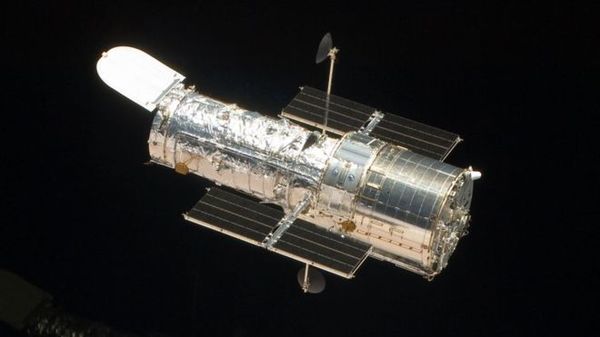
Hubble telescope hit by mechanical failure
"The Hubble Space Telescope is operating with only essential functions after it lost one of the gyroscopes needed to point the spacecraft. The observatory, described as one of the most important scientific instruments ever created, was placed in "safe mode" over the weekend, while scientists try to fix the problem. Hubble had been operating with four of its six gyroscopes when one of them failed on Friday. The telescope was launched in 1990. After the gyro failure at the weekend, controllers tried to switch on a different one, but that was found to be malfunctioning. That leaves Hubble with only two fully functional gyros." [...]
Ciência e Tecnologia

A rare star opens a window on the beginning of time
"“We made a major discovery, which questions our understanding of the formation of the first generations of stars in the universe”. Researcher at EPFL Laboratory of astrophysics (LASTRO), Pascale Jablonka is a founding member of the Pristine survey, an international project dedicated to the search of the most ancient and metal-poor stars. It allowed the recent identification of an extremely rare object. Called Pristine 221, it is among the 10 most metal-poor stars known to date in the halo of our Galaxy. Moreover, it is one out of two outstanding stars that are almost totally carbon free. This breakthrough has recently been published in the journal Monthly Notices of the Royal Astronomical Society (MNRAS)." [...]
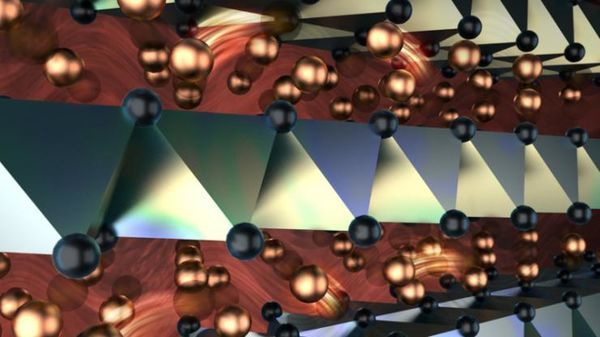
Copper Ions Flow Like Liquid through the Frozen Atomic Network of a Crystal
"Atomic insights into superionic crystals could lead to safer, more efficient rechargeable batteries Materials scientists have sussed out the physical phenomenon underlying the promising electrical and thermal properties of a class of materials called superionic crystals. A better understanding of such materials could lead to safer and more efficient rechargeable batteries than the current standard-bearer of lithium ion. Becoming a popular topic of study within the past five years, superionic crystals are a cross between a liquid and a solid. While some of their atoms retain a rigid crystalline structure akin to a frozen state, others become liquid-like above a certain temperature, and are able to flow through the solid scaffold. In a new study, scientists from Duke University, Oak Ridge National Laboratory (ORNL) and Argonne National Laboratory (ANL) probed one such superionic crystal containing copper, chromium and selenium (CuCrSe2) with neutrons and X-rays to determine how the material’s copper ions achieve their liquid-like properties. The results appear online on Oct. 8 in the journal Nature Physics." [...]
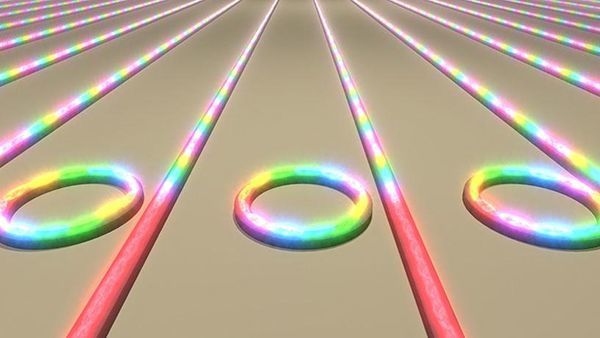
Columbia Engineers Build Smallest Integrated Kerr Frequency Comb Generator
"Low-power chip unites lasers and frequency combs for the first time and can be powered by an AAA battery, opening the door to portable devices for a wide range of applications from spectroscopy to optical communications to LIDAR. Optical frequency combs can enable ultrafast processes in physics, biology, and chemistry, as well as improve communication and navigation, medical testing, and security. The Nobel Prize in Physics 2005 was awarded to the developers of laser-based precision spectroscopy, including the optical frequency comb technique, and microresonator combs have become an intense focus of research over the past decade. A major challenge has been how to make such comb sources smaller and more robust and portable. In the past 10 years, major advances have been made in the use of monolithic, chip-based microresonators to produce such combs. While the microresonators generating the frequency combs are tiny—smaller than a human hair—they have always relied on external lasers that are often much larger, expensive, and power-hungry." [...]

Hot aluminum etches smooth nano-holes in semiconductors
"A German-French research team has identified surprising properties of nano-holes in semiconductor materials produced by a promising technique: In their experiments, hot aluminum droplets have etched remarkable smooth holes in an aluminum gallium arsenide (AlGaAs) substrate. The method is suitable, among other things, for the production of so-called quantum dots, which can be used, for example, for light sources with a very sharply defined color or for storage cells in quantum computers. The team from the Center for Hybrid Nanostructures (CHyN) at the University of Hamburg, the DESY NanoLab and the European Synchrotron Radiation Source (ESRF) in Grenoble, France, present their findings in the journal Physical Review Materials. There are basically two approaches to the production of nanostructures: In a so-called top-down approach, a crystal surface produced from several layers of different materials can be subsequently structured. However, this method, established in the semiconductor industry, has not yet led to success in the manufacturing of optical quantum dots. In an alternative bottom-up approach, physical mechanisms are exploited that lead to the spontaneous formation of nanostructures during crystal growth." [...]
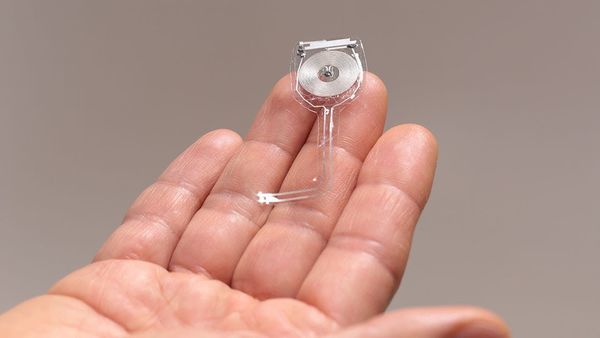
Researchers demonstrate first example of a bioresorbable electronic medicine
"Biodegradable implant provides electrical stimulation that speeds nerve regeneration Researchers at Northwestern University and Washington University School of Medicine in St. Louis have developed the first example of a bioresorbable electronic medicine: an implantable, biodegradable wireless device that speeds nerve regeneration and improves the healing of a damaged nerve. The collaborators -- materials scientists and engineers at Northwestern and neurosurgeons at Washington University -- developed a device that delivers regular pulses of electricity to damaged peripheral nerves in rats after a surgical repair process, accelerating the regrowth of nerves in their legs and enhancing the ultimate recovery of muscle strength and control. The size of a dime and the thickness of a sheet of paper, the wireless device operates for about two weeks before naturally absorbing into the body. The scientists envision that such transient engineered technologies one day could complement or replace pharmaceutical treatments for a variety of medical conditions in humans. This type of technology, which the researchers refer to as a “bioresorbable electronic medicine,” provides therapy and treatment over a clinically relevant period of time and directly at the site where it’s needed, thereby reducing side effects or risks associated with conventional, permanent implants. “These engineered systems provide active, therapeutic function in a programmable, dosed format and then naturally disappear into the body, without a trace,” said Northwestern’s John A. Rogers, a pioneer in bio-integrated technologies and a co-senior author of the study." [...]
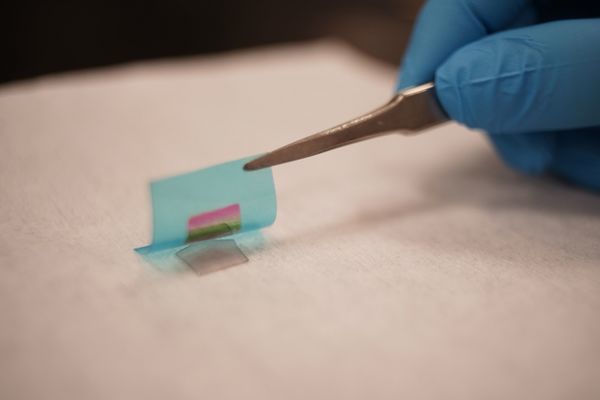
Study opens route to flexible electronics made from exotic materials
"The vast majority of computing devices today are made from silicon, the second most abundant element on Earth, after oxygen. Silicon can be found in various forms in rocks, clay, sand, and soil. And while it is not the best semiconducting material that exists on the planet, it is by far the most readily available. As such, silicon is the dominant material used in most electronic devices, including sensors, solar cells, and the integrated circuits within our computers and smartphones. Now MIT engineers have developed a technique to fabricate ultrathin semiconducting films made from a host of exotic materials other than silicon. To demonstrate their technique, the researchers fabricated flexible films made from gallium arsenide, gallium nitride, and lithium fluoride — materials that exhibit better performance than silicon but until now have been prohibitively expensive to produce in functional devices." [...]

Supercomputer Predicts Optical and Thermal Properties of Complex Hybrid Materials
"Computational models of layered hybrid perovskites open new material design space for light-based applications such as LEDs and water purification Materials scientists at Duke University computationally predicted the electrical and optical properties of semiconductors made from extended organic molecules sandwiched by inorganic structures. These types of so-called layered “hybrid organic-inorganic perovskites”—or HOIPs—are popular targets for light-based devices such as solar cells and light-emitting diodes (LEDs). The ability to build accurate models of these materials atom-by-atom will allow researchers to explore new material designs for next-generation devices. The results appeared online on October 4 in Physical Review Letters. “Ideally we would like to be able to manipulate the organic and inorganic components of these types of materials independently and create semiconductors with new, predictable properties,” said David Mitzi, the Simon Family Professor of Mechanical Engineering and Materials Science at Duke. “This study shows that we are able to match and explain the experimental properties of these materials through complex supercomputer simulations, which is quite exciting.” HOIPs are a promising class of materials because of the combined strengths of their constituent organic and inorganic pieces." [...]

Researchers quickly harvest 2-D materials, bringing them closer to commercialization
"Efficient method for making single-atom-thick, wafer-scale materials opens up opportunities in flexible electronics. Since the 2003 discovery of the single-atom-thick carbon material known as graphene, there has been significant interest in other types of 2-D materials as well. These materials could be stacked together like Lego bricks to form a range of devices with different functions, including operating as semiconductors. In this way, they could be used to create ultra-thin, flexible, transparent and wearable electronic devices. However, separating a bulk crystal material into 2-D flakes for use in electronics has proven difficult to do on a commercial scale. The existing process, in which individual flakes are split off from the bulk crystals by repeatedly stamping the crystals onto an adhesive tape, is unreliable and time-consuming, requiring many hours to harvest enough material and form a device." [...]

Micro energy harvesters for the Internet of Things
"Thin organic layers provide machines and equipment with new functions. They enable, for example, tiny energy recuperators. In future, these will be installed on pipes or other surfaces in order to convert waste heat into electricity. The experts at the Fraunhofer Institute for Material and Beam Technology IWS Dresden use ink based on conductive polymers for this purpose. The IWS engineers have developed a new process for this project: Small molecules are synthesized into polymers which are able to transport negative charge carriers (electrons). The “trick” is that this polymer, unlike comparable polymers, is in a liquid state." [...]
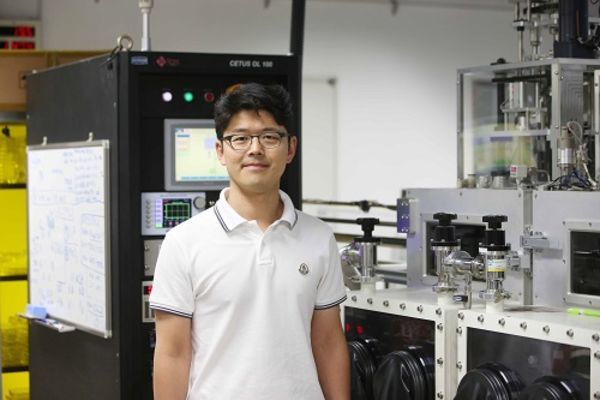
Permanent, Wireless Self-charging System Using NIR Band
"As wearable devices are emerging, there are numerous studies on wireless charging systems. Here, a KAIST research team has developed a permanent, wireless self-charging platform for low-power wearable electronics by converting near-infrared (NIR) band irradiation to electrical energy. This novel technology can be applied to flexible, wearable charging systems without needing any attachments. Colloidal-quantum-dots (CQDs) are promising materials for manufacturing semiconductors; in particular, PbS-based CQDs have facile optical tunability from the visible to infrared wavelength region. Hence, they can be applied to various devices, such as lighting, photovoltaics (PVs), and photodetectors. Continuous research on CQD-based optoelectronic devices has increased their power conversion efficiency (PCE) to 12%; however, applicable fields have not yet been found for them." [...]

Researchers develop 3D printed objects that can track and store how they are used
"Researchers at the University of Washington have developed 3D printed assistive technology that can track and store their use — without using batteries or electronics.Mark Stone/University of Washington Cheap and easily customizable, 3D printed devices are perfect for assistive technology, like prosthetics or “smart” pill bottles that can help patients remember to take their daily medications. But these plastic parts don’t have electronics, which means they can’t monitor how patients are using them. Now engineers at the University of Washington have developed 3D printed devices that can track and store their own use — without using batteries or electronics. Instead, this system uses a method called backscatter, through which a device can share information by reflecting signals that have been transmitted to it with an antenna. “We’re interested in making accessible assistive technology with 3D printing, but we have no easy way to know how people are using it,” said co-author Jennifer Mankoff, a professor in the UW’s Paul G. Allen School of Computer Science & Engineering. “Could we come up with a circuitless solution that could be printed on consumer-grade, off-the-shelf printers and allow the device itself to collect information?" [...]
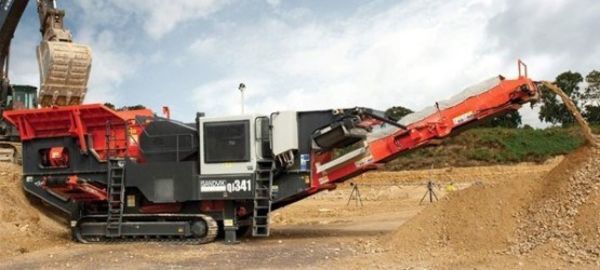
How Automation Is Revolutionizing The Construction And Mining Industry
"The construction and mining industries have long been synonymous with being ‘behind the times’, but the truth of the matter is very different. In fact, nowadays, these industries are often the first to adopt new technologies in order to more efficiently streamline everyday processes and create safer, more eco-friendly ways of working. One technology currently being integrated within mining and construction is automation. From driver-less vehicles, to automated jaw crushers, the industry could see a vast change in the near future, but what has automation done for us so far? What Do We Mean By Automation? While the idea of automated technology isn’t anything new, understanding just what it is and how it could help us in the future is the first step to adopting these technologies in the future." [...]
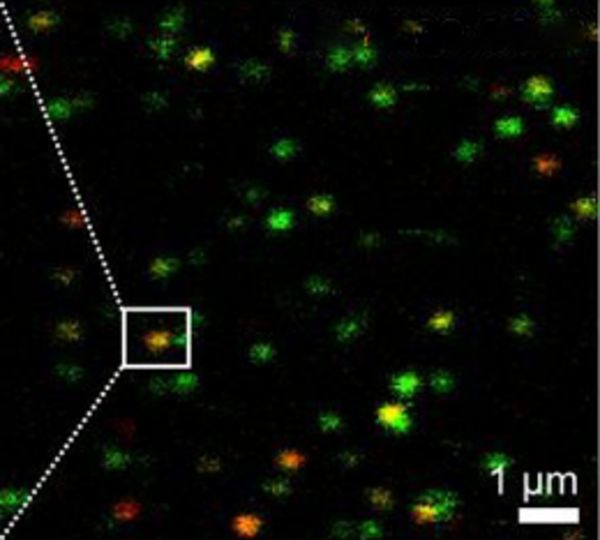
Molecular machines at work
"LMU researchers have used a special fluorescence-based imaging technique to track the shape changes that occur when pore proteins in the cell membrane export molecules into the extracellular medium. A biological cell can be thought of as a hive, in which proteins play the role of the worker bees. However, proteins are far more versatile and can interact with each other to form molecular machines. In order to understand the mechanisms that underlie their functional versatility, structural biologists have relied primarily on the analysis of their three-dimensional structures following crystallization. However, protein crystals provide an essentially static picture. “So this approach on its own is insufficient,” says Thorben Cordes, Professor of Physical and Synthetic Biology at LMU." [...]
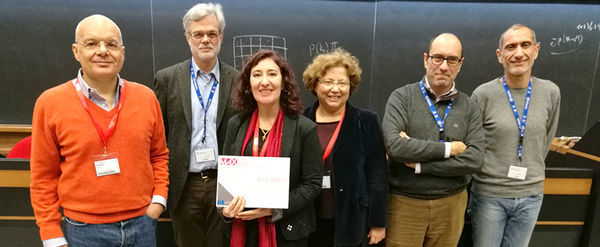
Graphene controls surface magnetism at room temperature
"In a refreshing change of perspective, theoretical physicist Dr Zeila Zanolli has looked at the proximity effects of graphene on a magnetic semiconducting substrate, finding it to affect the substrate’s magnetism down to several layers below the surface. Her paper was published on 5 October in Physical Review B. Related work also led her to become one of three recipients of the first MaX Prize for frontier research in computational materials science. Interface physics is the study of the interactions that take place at the junction of two materials when brought into contact. Interfaces have always existed, but it is only with advances in the observation and manipulation of matter at the nanoscale that it has become possible to explore the unique phenomena they are home to. Since the advent of graphene, the attention of the research community has been focused on how other materials can be used to imprint new properties onto this intoxicatingly versatile material." [...]
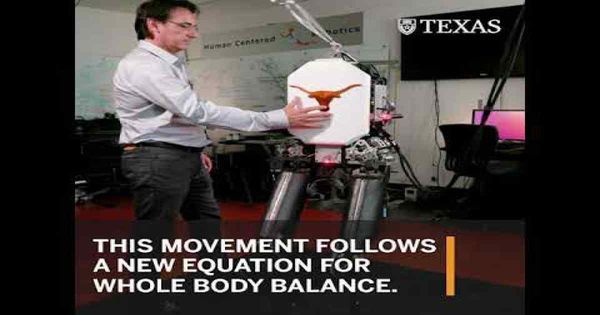
Robot Masters Human Balancing Act
"When walking in a crowded place, humans typically aren’t thinking about how we avoid bumping into one another. We are built to use a gamut of complex skill sets required to execute these types of seemingly simple motions. Now, thanks to researchers in the Cockrell School of Engineering at The University of Texas at Austin, robots may soon be able to experience similar functionality. Luis Sentis, associate professor in the Department of Aerospace Engineering and Engineering Mechanics, and his team in the Human Centered Robotics Laboratory have successfully demonstrated a novel approach to human-like balance in a biped robot. Their approach has implications for robots that are used in everything from emergency response to defense to entertainment. The team will present their work this week at the 2018 International Conference on Intelligent Robots and Systems (IROS2018), the flagship conference in the field of robotics." [...]
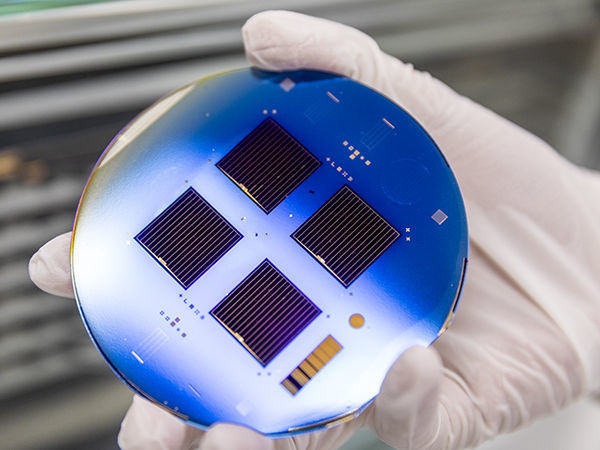
Thin films for more efficient solar cells
"The efficiency of solar cells can be increased by thin-film contacts developed by researchers at KAUST. Improving the performance of solar cells requires scrutinizing every aspect of their design. First, this means improving the crystalline quality of the absorbing material to maximize the conversion of photons to negatively charged electrons and positively charged holes. Next, the device’s architecture must be optimized to ensure these charge carriers can move efficiently through the material. Finally, the electrical contacts that extract the carriers from the device and into an external circuit need to be perfected. Xinbo Yang and his colleagues from the KAUST Solar Center and the KAUST Core Lab, together with coworkers from the Australian National University, focus on this third step by developing electron-selective tantalum-nitride thin-film contacts for silicon solar cells." [...]
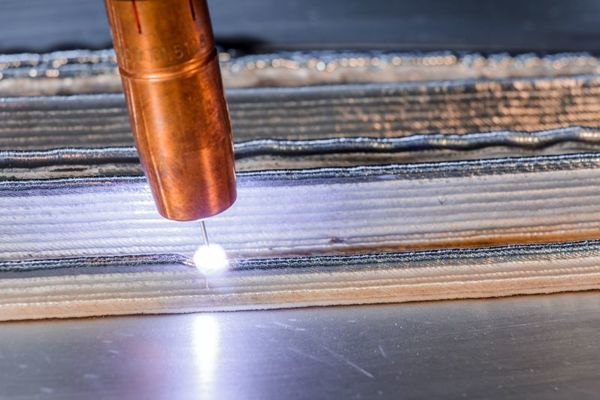
New materials and methods in 3D printing
"Components for vehicles and cars, individual medical implants or even building facades and entire houses: Additive manufacturing, also known informally as 3D printing, is revolutionizing manufacturing technologies. An expert conference at the Technical University of Munich (TUM) illustrates the wide spectrum covered by this technology and provides an insight into the broadly deployed expertise of TUM. Additive manufacturing includes a number of different processes in which the workpiece is built by applying one level or element of building material at a time. This type of manufacturing has many advantages: Designers have more freedom in creating objects, certain functions can be integrated directly in the workpiece, and the manufacture of individually customized products is economically viable, even with small production batch sizes. Researchers at TUM are using and researching these processes in a number of projects. At the Chair of Timber Construction and Structural Design in the TUM Department of Civil, Geo and Environmental Engineering, concrete components are being produced using a 3D printer." [...]

Transparent Loudspeakers and MICs that Let Your Skin Play Music
"An international team of researchers, affiliated with UNIST has presented an innovative wearable technology that will turn your skin into a loudspeaker. This breakthrough has been led by Professor Hyunhyub Ko in the School of Energy and Chemical Engineering at UNIST. Created in part to help the hearing and speech impaired, the new technology can be further explored for various potential applications, such as wearable IoT sensors and conformal health care devices. In the study, the research team has developed ultrathin, transparent, and conductive hybrid nanomembranes with nanoscale thickness, consisting of an orthogonal silver nanowire array embedded in a polymer matrix. They, then, demonstrated their nanomembrane by making it into a loudspeaker that can be attached to almost anything to produce sounds. The researchers also introduced a similar device, acting as a microphone, which can be connected to smartphones and computers to unlock voice-activated security systems." [...]

A transparent and thermally stable polyamide - 100 percent biobased
"The natural substance 3-carene is a component of turpentine oil, a waste stream of the production of cellulose from wood. Up to now, this by-product has been incinerated for the most part. Fraunhofer researchers are using new catalytic processes to convert 3-carene into building blocks for biobased plastics. The new polyamides are not only transparent, but also have a high thermal stability. Plastics are a useful alternative to glass or metal for a wide range of applications. Polyamides play an important role in the manufacture of high-quality structural components, as they are not only impact- and abrasion-resistant, but also resistant to many chemicals and solvents." [...]
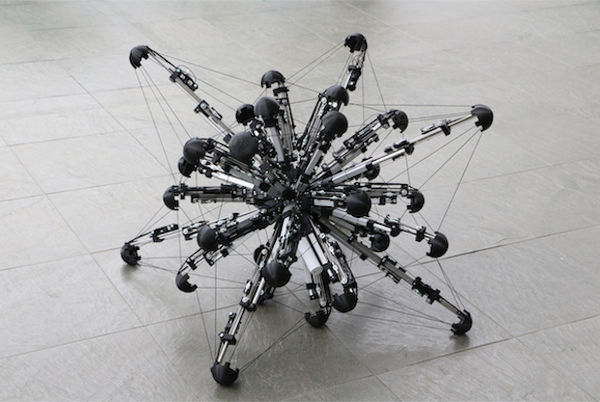
32-Legged Spherical Robot Moves Like an Amoeba
"Mochibot is out to prove that there's no such thing as too many legs Making a one-legged robot that moves is very hard. Two-legged robots are a little bit more straightforward in some ways, and four-legged robots are statically stable much of the time. You can see where this is going—there’s a general trend toward more legs being more stable and potentially easier to control, especially as terrain complexity increases. So what happens if you take that logic to an extreme? As it turns out, you end up with a spherical robot made of 32 individually actuated telescoping legs, named Mochibot. Mochibot’s shape is based on a rhombic triacontahedron, which is a polyhedron with 32 vertices and 30 faces made of rhombuses (or rhombi)." [...]
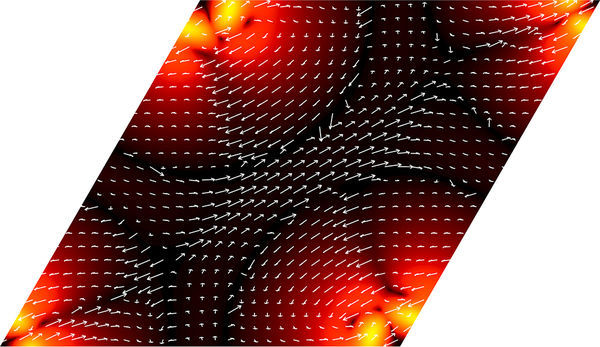
Precise electron spin control yields faster memory storage
"Data storage devices are not improving as fast as scientists would like. Faster and more compact memory storage devices will become a reality when physicists gain precise control of the spins of electrons. They typically rely on ultra-short lasers to control spins. However, improvement of storage devices via spin control requires first to develop ways of controlling the forces acting on these electronic spins. In a recent study published in EPJ B, John Kay Dewhurst and colleagues, have developed a new theory to predict the complex dynamics of spin procession once a material is subjected to ultra-short laser pulses. The advantage of this approach, which takes into account the effect of internal spin rotation forces, is that it is predictive." [...]
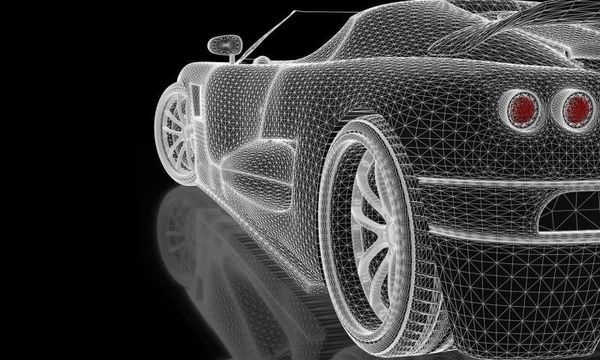
Future cars could be made from revolutionary new material
"A new material that is as stiff as metal but flexible enough to withstand strong vibrations could transform the car manufacturing industry, say experts from the University of Surrey. In a paper published in Scientific Reports, scientists from Surrey joined forces with Johns Hopkins University in Baltimore and the University of California to develop a material that has high stiffness and damping. The team achieved this near impossible combination in a material by using 3-D woven technical textile composite sheets, with selected unbonded fibres – allowing the inside of the material to move and absorb vibrations, while the surrounding material remains rigid. Researchers believe their new material could usher in a new wave of trains, cars, and aircrafts, allowing customers to experience little to no vibration during their travels. Dr. Stefan Szyniszewski, lead author of the study and assistant professor of materials and structures at the University of Surrey, said: "The idea of a composite the resolves the paradox of stiffness and damping was thought to be impossible – yet here we are. This is an exciting development that could send shock waves through the car, train and aerospace manufacturing industries." [...]
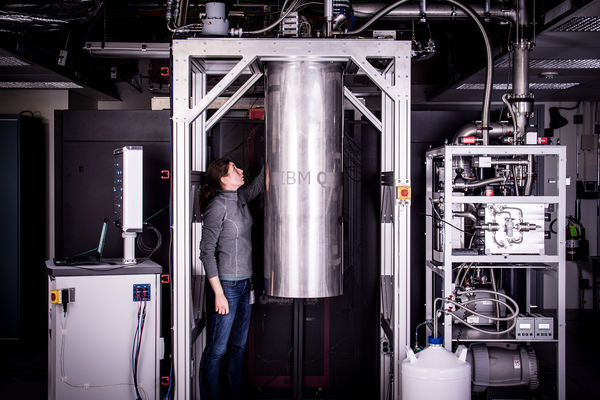
IBM Builds Its Most Powerful Universal Quantum Computing Processors
"IBM Doubles Compute Power for IBM Q Commercial Systems with New Processor Developers, Researchers and Programmers Execute more than 300,000 Quantum Experiments on IBM Cloud IBM (NYSE: IBM) announced today it has successfully built and tested its most powerful universal quantum computing processors. The first upgraded processor will be available for use by developers, researchers, and programmers to explore quantum computing using a real quantum processor at no cost via the IBM Cloud. The second is a new prototype of a commercial processor, which will be the core for the first IBM Q early-access commercial systems. Launched in March 2017, IBM Q is an industry-first initiative to build commercially available universal quantum computing systems for business and science applications. IBM Q systems and services will be delivered via the IBM Cloud platform. IBM first opened public access to its quantum processors one year ago, to serve as an enablement tool for scientific research, a resource for university classrooms, and a catalyst of enthusiasm for the field." [...]
Modelos 3D
Com a disponibilidade de ferramentas que permitem dar azo a nossa imaginação na criação de peças 3D e espaços como o thingiverse para as publicar, esta rubrica apresenta alguns modelos selecionados que poderão ser úteis.

Open source fully parametric Peristaltic Pump
"There are several peristaltic pump projects on Thingiverse. However most of them lack source codes and could not be adjusted to use with different hose and bearings. So I designed fully parametric peristaltic pump. It can be customized to use any silicon hose, any Nema motor, and any bearings. Source files are supplied. Feel free to modify it and adapt to suit your needs." [...]
Documentação
A documentação é parte essencial do processo de aprendizagem e a Internet além de artigos interessantes de explorar também tem alguma documentação em formato PDF interessante de ler. Todos os links aqui apresentados são para conteúdo disponibilizado livremente pelo editor do livro.

newelectronics 9 Outubro 2018
"New Electronics is a fortnightly magazine focusing on technological innovation, news and the latest developments in the electronics sector. Downloadable as a digital page turner or pdf file, or offered as a hard copy, the New Electronics magazine is available in a format to suit you. " [...]
Projetos Maker
Diversos Projetos interessantes.
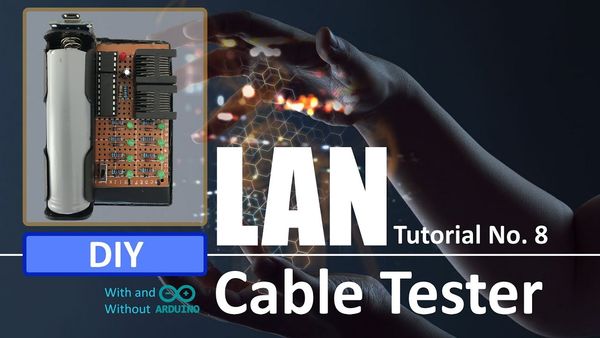
DIY - LAN Cable Tester
"There is nothing worse than running your drops only to realize that you have a fault in one of the cable runs. The best approach is to get it right in the first place by using a "LAN Cable Tester". Sometimes, cables can also tear because of poor material quality or bad installation or sometimes they get gnawed by animals. In this project, I am going to make a LAN cable tester with just a few basic electronics components. The entire project, excluding the battery cost me just a bit over $3. With this tester we can easily check RJ45 or RJ11 network cables for their continuity, sequence and if they have a short-circuit." [...]

SparkFun SAMD21 Pro RF Hookup Guide
"Introduction The SparkFun SAMD21 Pro RF is the fated meeting of a SAMD21 and a long-range RFM95W LoRa®-enabled radio. The outcome is a compact, blazing fast microcontroller with excellent point to point data transmission in the 915MHz ISM radio band with LoRa capabilities. In this tutorial we’ll break down the capabilities of the development board, give you a brief introduction to LoRa and get you familiarized with the two Arduino libraries that will get you started with the radio and LoRaWan. If you’re familiar with LoRaWan then skip ahead to the Hardware Overview, otherwise let’s get started with a brief introduction to LoRaWAN. Brief Introduction to LoRaWAN LoRaWAN stands for Long Range Wide Area Network and describes the technology that allows for devices to send and upload data to the Internet using radio transmission. The technology is a frequency modulation scheme similar in theory but dissimilar to AM or FM which stand for Amplitude Modulation and Frequency Modulation respectively." [...]
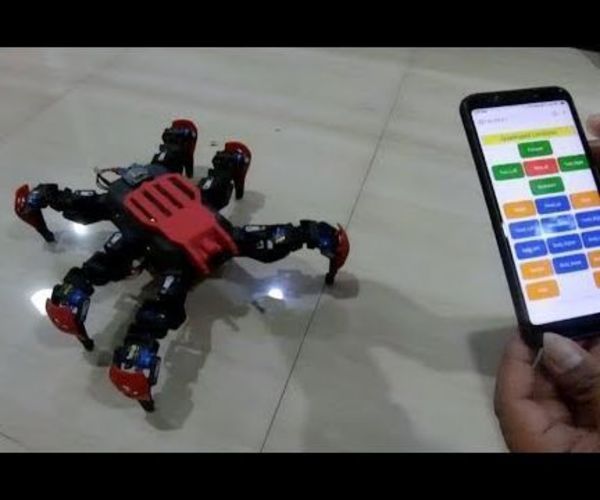
Simple NodeMCU 18 DOF Hexapod
"A hexapod robot is a mechanical vehicle that walks on six legs. Since a robot can be statically stable on three or more legs, a hexapod robot has a great deal of flexibility in how it can move. If legs become disabled, the robot may still be able to walk. Furthermore, not all of the robot's legs are needed for stability; other legs are free to reach new foot placements or manipulate a payload. Many hexapod robots are biologically inspired by Hexapoda locomotion. Hexapods may be used to test biological theories about insect locomotion, motor control, and neurobiology." [...]
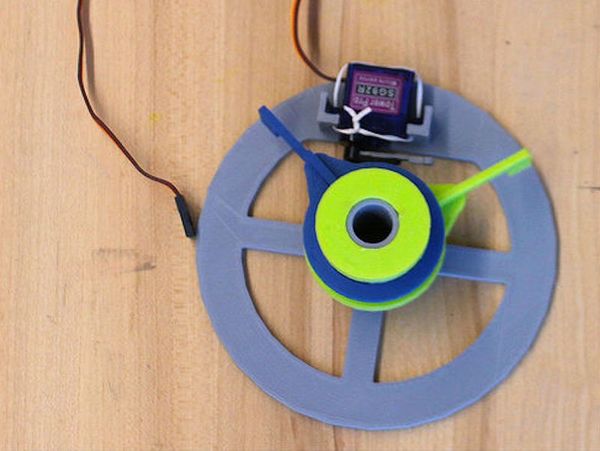
Drawbot!
"This instructable will document the construction of a Raspberry Pi controlled drawing robot that allows you to turn any flat surface into a canvas. Once you've built the drawing robot you'll be able to calibrate and send drawings to it via WiFi. *This was built in the Black & Veatch MakerSpace from plans created by MakerSpace patron and creative wonder Andy Wise. See the Drawbot project on Github by Andy for more information. " [...]
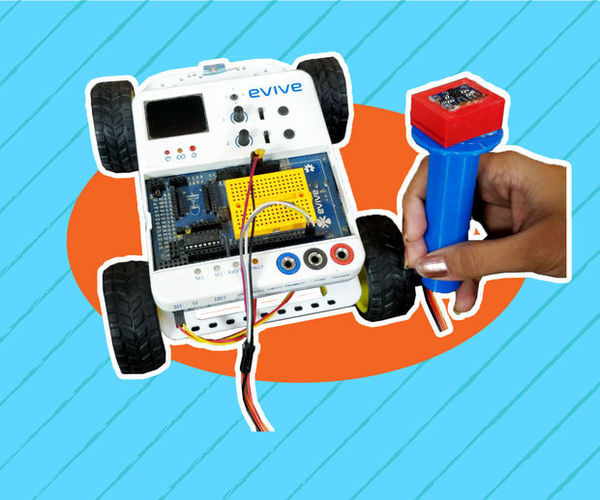
DIY Accelerometer Based Controller
"And were back with another DIY gaming project! As always, playing with something made with your own hands is always an out-of-the-world experience! First, it was a DIY Game Controller; now its time for a DIY Joystick using Accelerometer! This time were going to make a DIY Joystick using an accelerometer using which you can control a robotic arm, an entire robot, and even play many games! Ready to transform your gaming experience? Then begin right away!" [...]
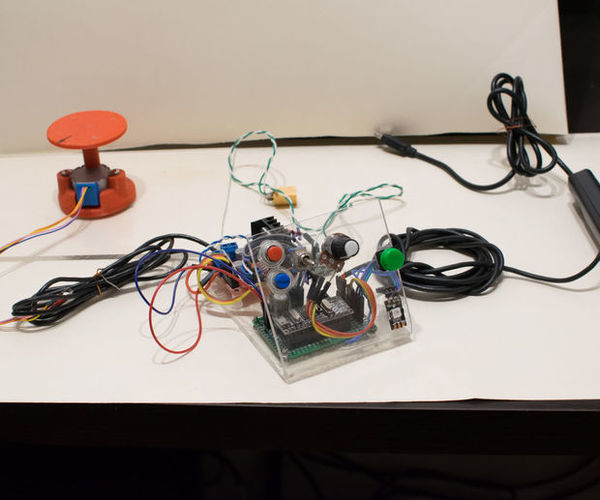
Automatic Turntable With Shutter Release
"Hello. In this article Ill explain how to build simple and ultra cheap automated turntable with shutter release. The price for all parts are little less than $30 (all prices are taken from Aliexpress). Most of the 3d artists, who started using photogrammetry are faced with same problem : how to automate shooting process. Arduino is the best choice for this purpose. Its cheap and easy to develop devices." [...]
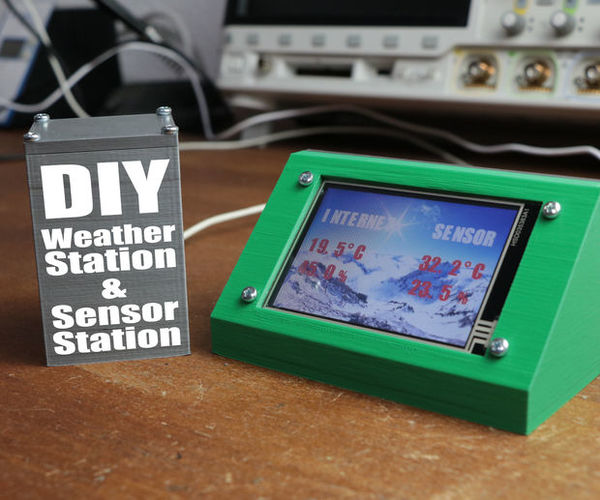
DIY Weather Station & WiFi Sensor Station
"In this project I will show you how to create a weather station along with a WiFi sensor station. The sensor station measures local temperature and humidity data and sends it, through WiFi, to the weather station. The weather station then displays the data on its LCD screen. It also grabs the current temperature and humidity data in your city from the Internet and displays it as well on the LCD screen. Let's get started! " [...]

RGB Thermometer Using PICO
"That was the final result of our effort today. It is a thermometer that will let you know how warm it is in your room, by using an RGB LED strip placed in an acrylic container, that is connected to a temperature sensor to read the temperature. And we'll be using PICO to get this project to life. " [...]
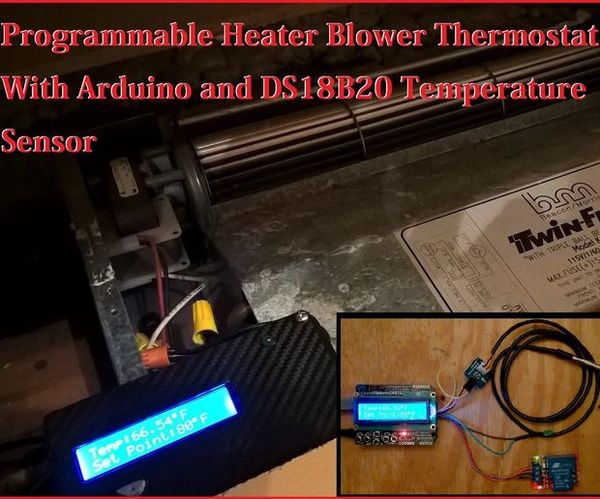
Arduino Programmable Heater Blower Thermostat With DS18B20 Temperature Sensor
"High Voltage Warning: Before we begin I would like to caution that this project will involve high voltage and proper precautions should be exercised during these steps. Make sure all sources of house 115v AC voltage is disabled at the source such as an electrical breaker box. High voltage can cause SEVERE INJURY or DEATH. A little bit of background: I recently bought a house during the cold winter months. This house is equipped with a hot water boiler where as hot water is passed through passive radiators in each room. That being said the kitchen was absolutely the coldest room in the house and no obvious radiator was to be seen in only this one room." [...]

Arduino Waveform Generator
"In the lab, one often needs a repetitive signal of a certain frequency, shape and amplitude. It may be to test an amplifier, check out a circuit, a component or an actuator. Powerful waveform generators are available commercially, but it is relatively easily to make a useful one yourself with an Arduino Uno or Arduino Nano, see for example: https://www.instructables.com/id/Arduino-Waveform-... https://www.instructables.com/id/10-Resister-Ardui... Here is the description of another one with the following features: * Accurate waveforms: 8-bit output using R2R DAC, 256-sample shape * Fast: 381 kHz sampling rate * Precise: 1mHz steps frequency range. As accurate as the Arduino crystal. * Easy operation: waveform and frequency settable with single rotary encoder * Wide range of amplitudes: millivolts to 20V * 20 pre-defined waveforms." [...]
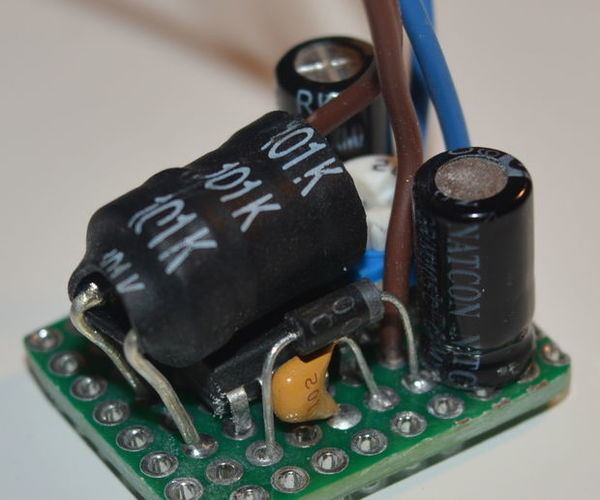
Yet Another Smallest Regulated Boost SMPS (No SMD)
"Full project name: Yet another world's smallest regulated boost DC to DC converter switch mode power supply using THT (through hole technology) and no SMD (surface mounted device) OK, ok, You got me. Maybe it is not smaller than this one created by Murata Manufacturing company but definitely something You can build by Yourself in home using commonly accessible elements and tools. My idea was to create a compact switch mode power supply for my small microcontroller based projects. This project is also a kind of tutorial how to create paths on a PCB using solid wire instead of build paths with a solder. " [...]
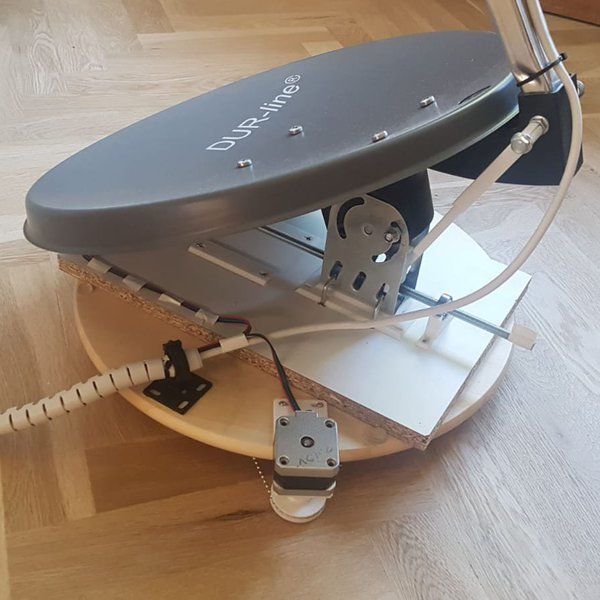
Tiny Radio Telescope
"A tiny homemade radio telescope I built which can take pictures IN RADIO. The aim of this project was to build a radio telescope using a small satellite dish, which can scan its surroundings and create an image representing the intensity of the radio in different areas of the sky. I was inspired to create this project after watching a video by "The Thought Emporium" (there's a link at the bottom of the details page), where he shows how he built a radio telescope at home. My radio telescope is different to this one, and I used my own design and wrote my own code to control the dish and receive radio data, but the idea is more or less the same. I finished this project a few months ago, and decided to post it here to see what people think, and to help anyone who wants to build their own radio telescope. I consider this project more of an experiment, to see what can be done with a tiny radio telescope." [...]
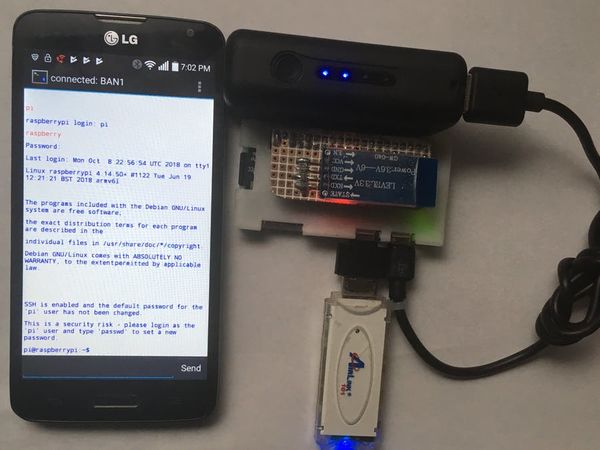
Portable Hacking Station RPI Zero W (Like Watch Dogs)
"Station to perform WiFi network audits, using Raspberry Pi Zero W and Raspberry Pi 3, with connection from the BT or mobile data cell phone. Story A station to perform WiFi network audits, using Raspberry Pi Zero W and Raspberry Pi 3, with connection from the BT or mobile data cell phone. Always use technology for improve the world, if you are a black hat or gray hat hacker please abstain at this point ......... or at least leave your likes to make me feel less guilty XP. Introduction: In today's world, computer security is one of the main concerns of people and companies, but we are certainly exposed to attacks by black hat hackers, who only seek to do evil and use their skills to do wrong to companies, people or even you. So it occurred to me that it would be incredible to be able to perform security tests of wireless networks through a simple system such as a Raspberry Pi, however one of the great disadvantages of these is the need to use display systems such as HDMI screens and keyboards to insert the commands. In this case the project explains how to make a system based on a Raspberry Pi Zero W with a Bluetooth Serial or WiFi SSH to a smartphone, so that it is possible to write the commands on the console using the smartphone." [...]
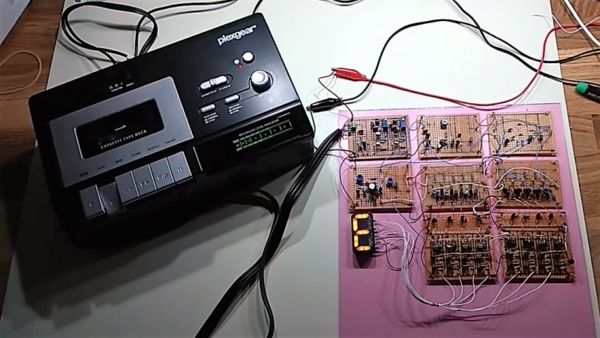
Kansas City Standard tape decoder/viewer made with discrete transistors
"A discrete transistor implemenation of a Kansas City Standard data tape decoder and viewer. This is my entry for the RetroChallenge RC2018/09. The entries/blog here will be kept in chronological order with the newest post at the bottom. For this challenge I'll attempt to make a decoder/viewer for the old Kansas City Standard tapes that once was the standard for storing data and programs on regular cassette tapes. Since I have a thing for using discrete transistors instead of ICs I'll make it with just Q's R's and C's. Maybe a D and some LEDs will appear as well, but definitely no ICs." [...]
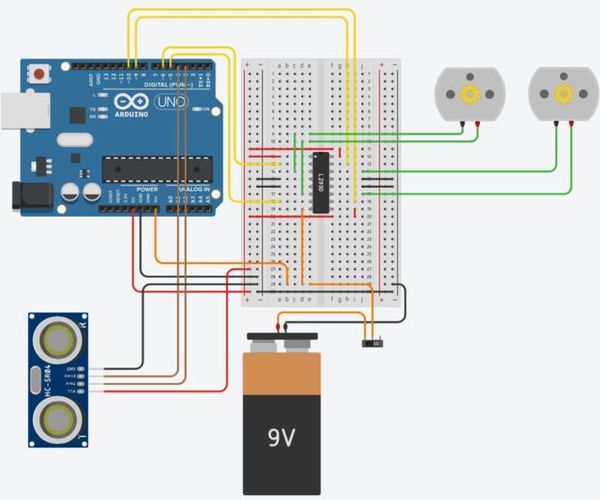
Ultrasonic Wall-Avoiding Robot
"This is a tutorial on how to make a basic wall-avoiding robot. This project will require a few components and a bit of dedication and time. It would help if you have a small amount of knowledge on electronics but if you are a complete beginner, now is the time to learn! This is just how i learnt electronics; by making other peoples projects even though i had no idea how they were working at all. Gradually though i learnt small pieces that built up into actual knowledge i can apply to my own projects. After you have completed this tutorial you will have assembled the circuit above and will (hopefully) have picked up some information on electronics." [...]
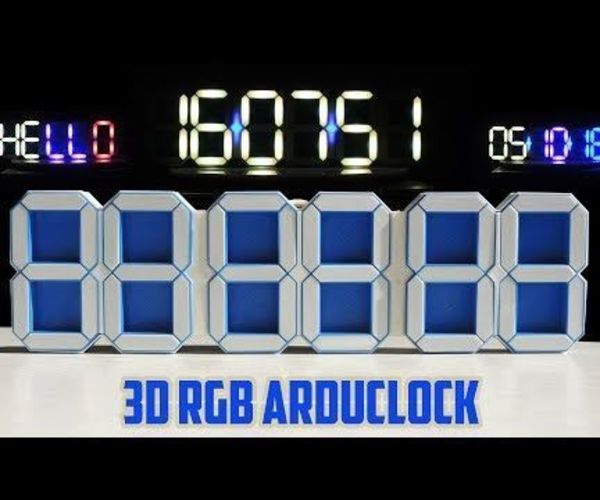
3D Rgb Arduclock
"Hi Makers, Hi makers, We see that you like our previous project "ANIMATED RGB WALL CLOCK". Link is here. It was an honor for us. After a long time, we are again with a CLOCK PROJECT. And now, we offer you our new CLOCK PROJECT. I call his name "3D RGB ARDUCLOCK"." [...]
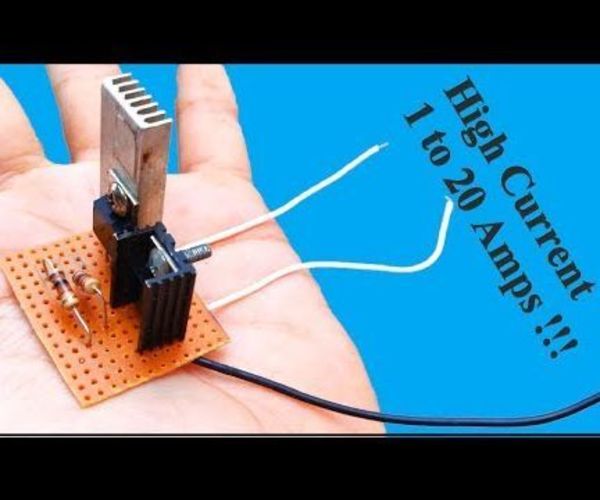
DC to DC Buck Converter DIY || How to Step Down DC Voltage Easily
"A buck converter (step-down converter) is a DC-to-DC power converter which steps down voltage (while stepping up current) from its input (supply) to its output (load). It is a class of switched-mode power supply (SMPS) typically containing at least two semiconductors (a diode and a transistor, although modern buck converters frequently replace the diode with a second transistor used for synchronous rectification) and at least one energy storage element, a capacitor, inductor, or the two in combination. To reduce voltage ripple, filters made of capacitors (sometimes in combination with inductors) are normally added to such a converter's output (load-side filter) and input (supply-side filter). " [...]

556 Servo Driver
"Servos (also RC servos) are small, cheap, mass-produced servomotors used for radio control and small-scale robotics. The are designed to be easily controlled: the position of the internal potentiometer is continually compared to the commanded position from the control device (i.e., the radio control). Any difference gives rise to an error signal in the appropriate direction, which drives the electric motor either forwards or backwards, and moving the shaft to the commanded position. When the servo reaches this position, the error signal reduces and then becomes zero, at which point the servo stops moving. Radio control servos are connected through a standard three-wire connection: two wires for a DC power supply and one for control, carrying a pulse-width modulation (PWM) signal. The standard voltage is 4.8 V DC, however 6 V and 12 V is also used on a few servos." [...]
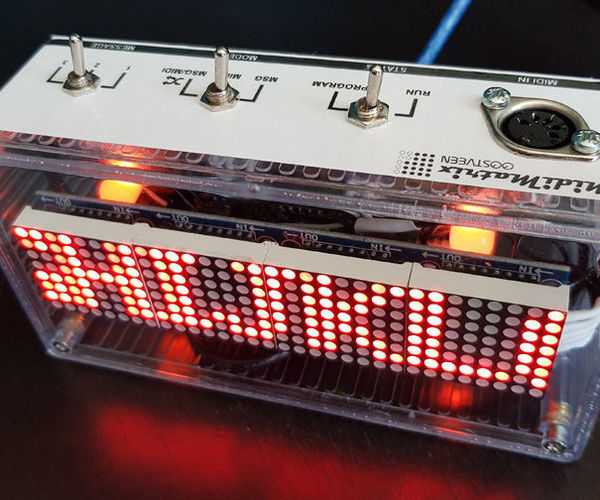
MidiMatrix - Broadcast Your Name Whilst Performing
"You can't miss a LED Matrix displaying messages. It's an excellent way of broadcasting your name/website/instagram etc. whilst gigging. In addition to displaying scrolling messages, this design syncs to a MIDI clock displaying animations in a 4/4 beat fashion. 4 RGB LEDs change colour at random interval to attract even more attention. " [...]
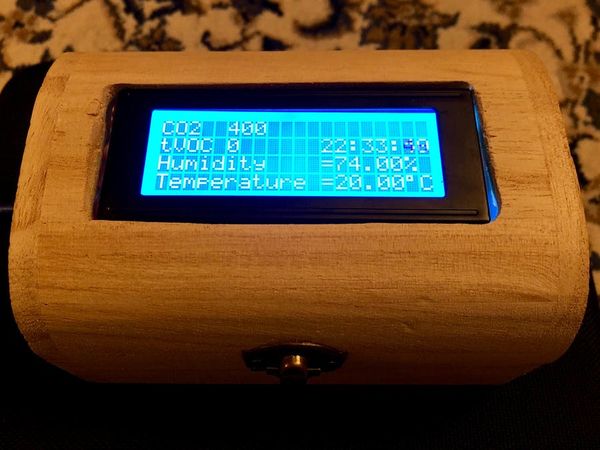
Wooden Chest Air Quality Monitor
"A compact air quality, temperature and humidity monitor enclosed in a small wooden chest, with a four-row LCD display. A project completed to measure the air condition in a diesel polluted building. Then the final design enclosed in a wooden box to demonstrate its function to apprentices for inspiration for their projects. " [...]
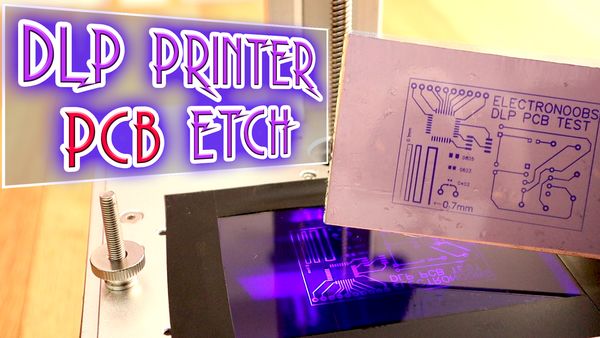
Use DLP 3D Printer To Etch A PCB
"In this tutorial, we will use a DLP printer to expose the circuit layout on a photosensible film over a copper board. Then, we will use acid to etch the PCB and see the results. DLP printer should give us very good results. But first we haev to prepare the 3D file and then etch the PCB. First we need a circuit to print. I've used easyEDA to design my circuits." [...]

The ULTIMATE Raspberry Pi Smart Home Door Lock
"It's got 3-factor authentication including NFC fob, touchscreen PIN entry and one-time passcode sent via SMS - then the door unlocks! In this DIY gadget build, we’ll be creating a secure door entry system using a Raspberry Pi. You already may be familiar with two-factor authentication for logging into secure systems like your online banking or your Facebook or email accounts. This door entry system goes one step further and uses THREE factor authentication. To unlock the door, you require; An RFID keyfob A 6-digit PIN A random one-time access code which is generated and sent as a text to your phone. To build this project for yourself, you will need… A Raspberry Pi." [...]
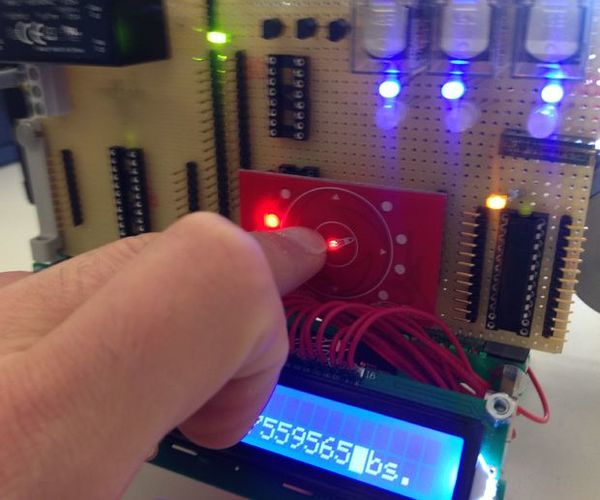
High-Precision Temperature Controller
"In science and in engineering worlds keeping track of temperature aka (movement of the atoms in thermodynamics) is one of the fundamental physical parameters one should consider almost everywhere, starting from cell biology up to hard fuel rocket engines and thrusts. In computers and basically everywhere where I forgot to mention. The idea behind this instrument was pretty simple. While developing firmware I needed a test setup where I could test the firmware for the bugs instead of our products, which are handcrafted by technicians not to be causing any kind of malfunctions related to above mentioned. Those instruments tend to get hot and therefore constant and precise temperature monitoring is needed in order to keep all the parts of the instrument up and running, and which is not less important performing outstandingly. Using NTC thermistors to solve the task has several benefits." [...]
That's all Folks!


